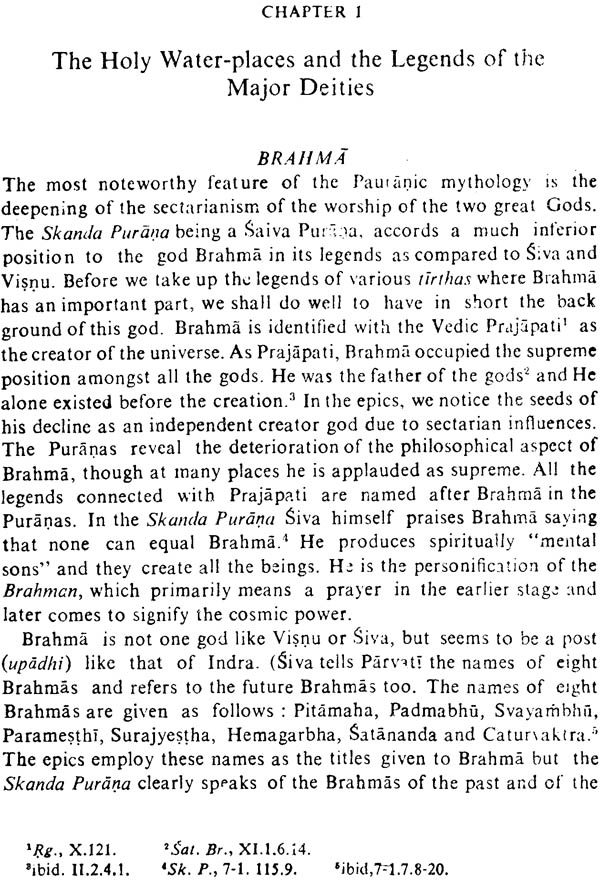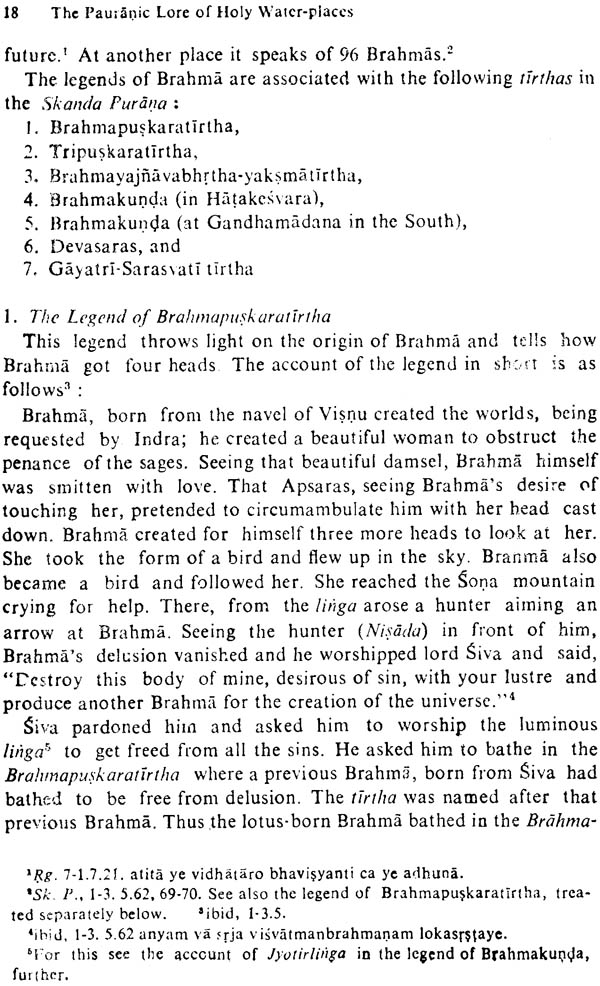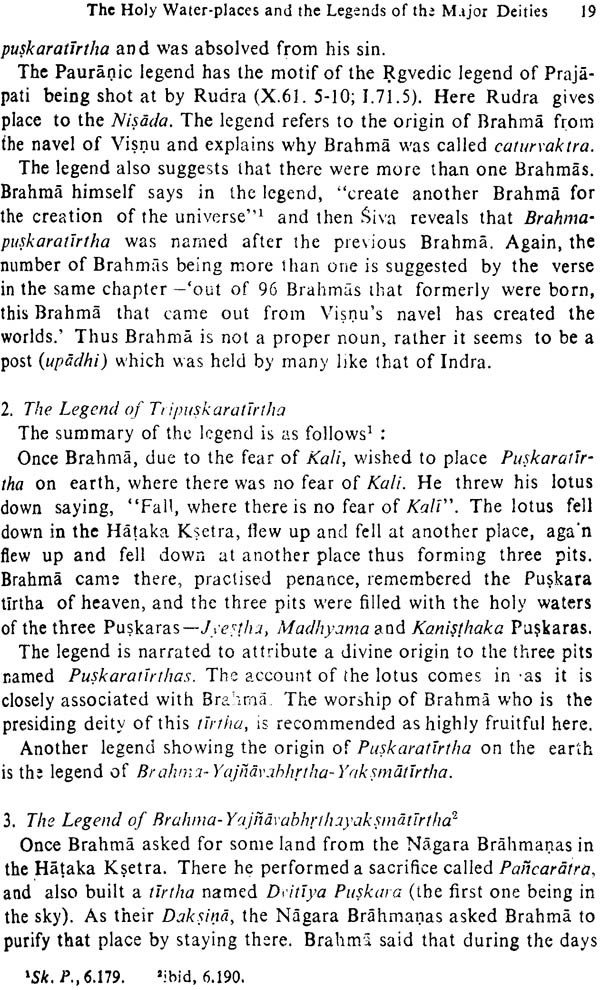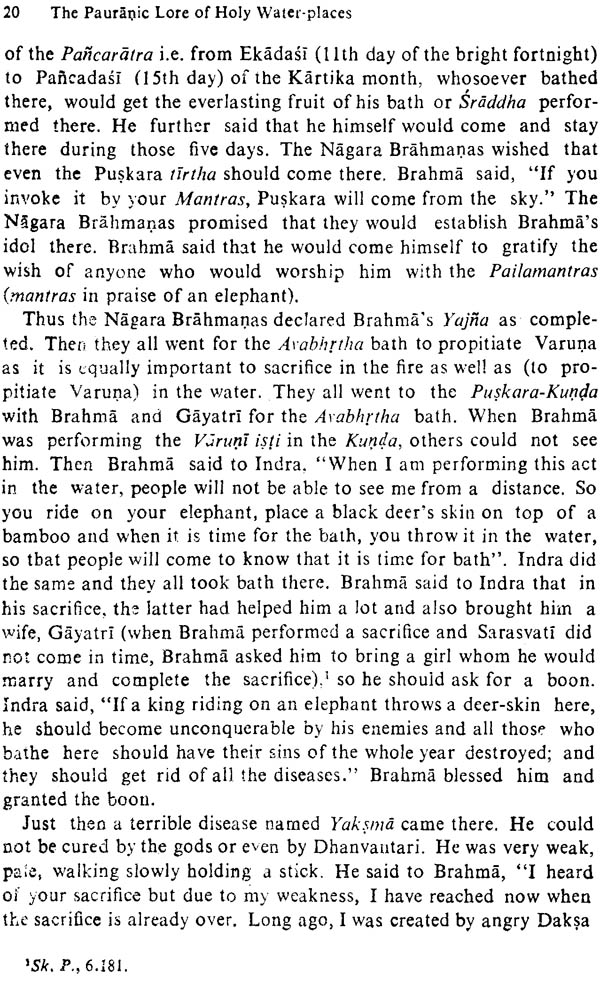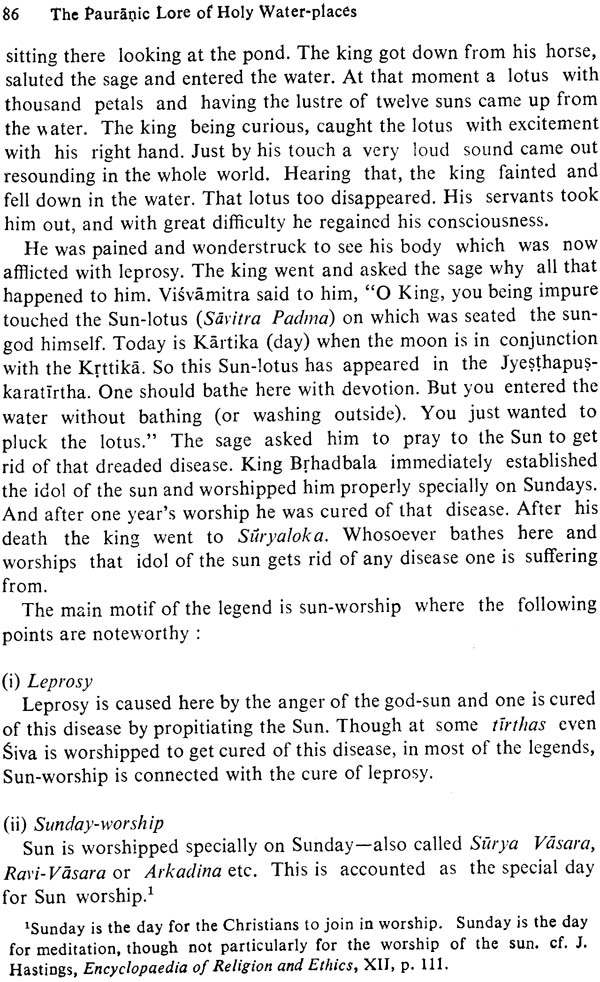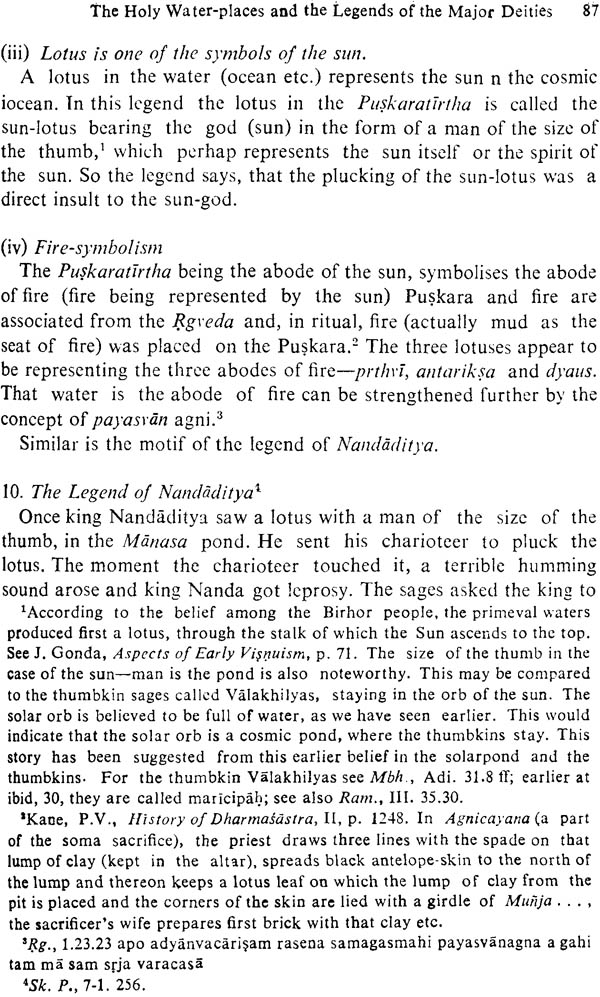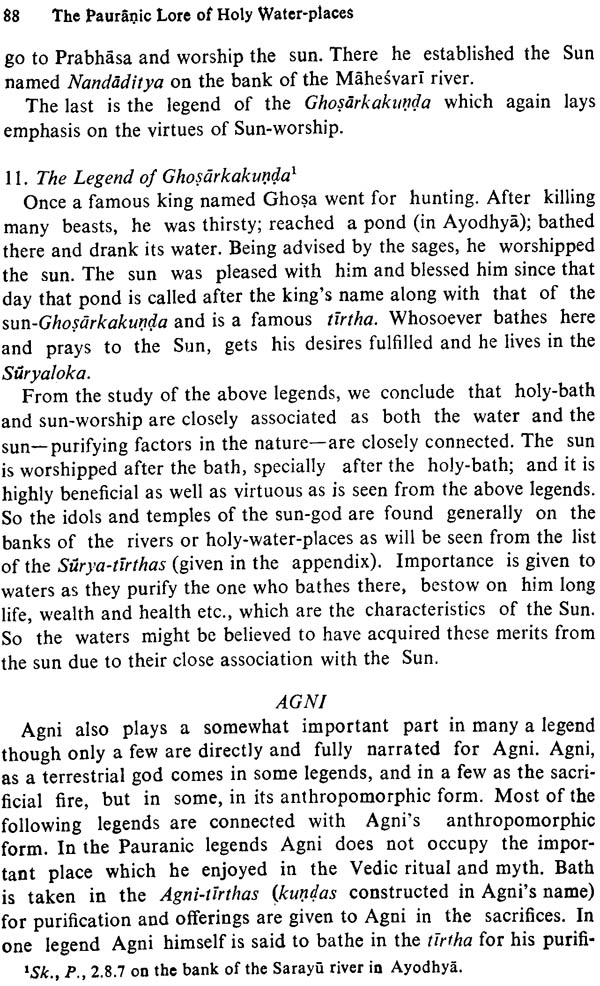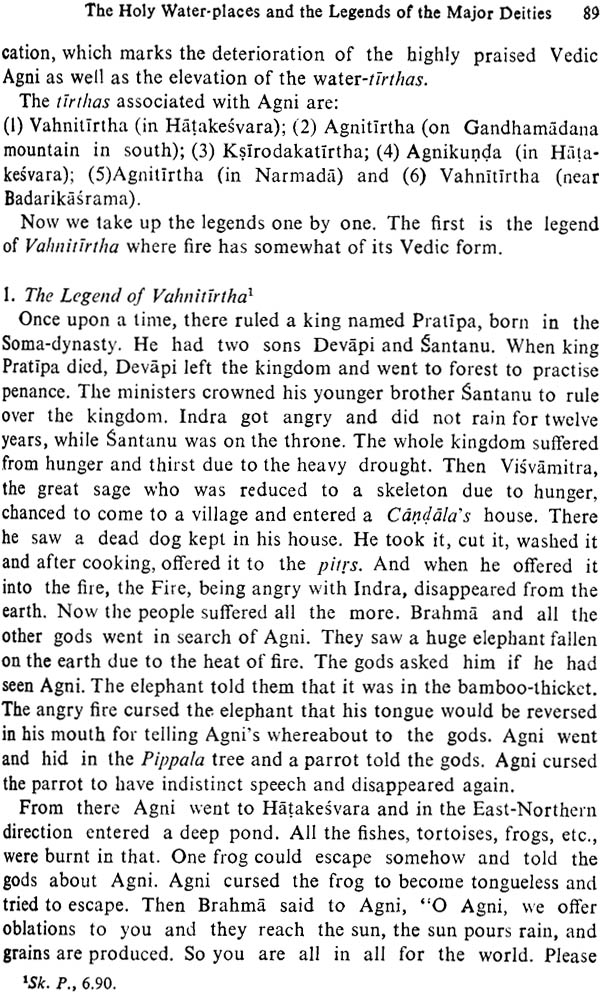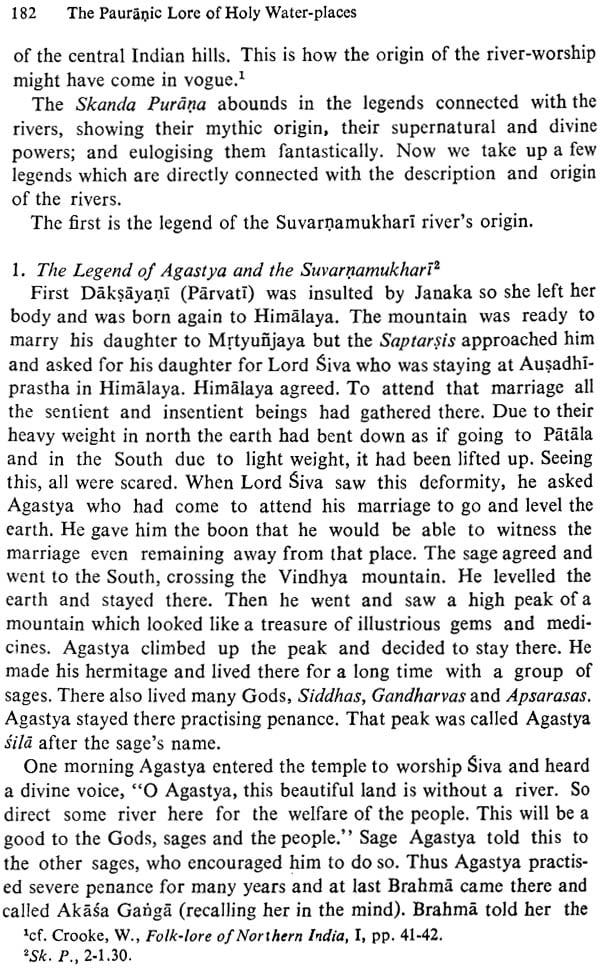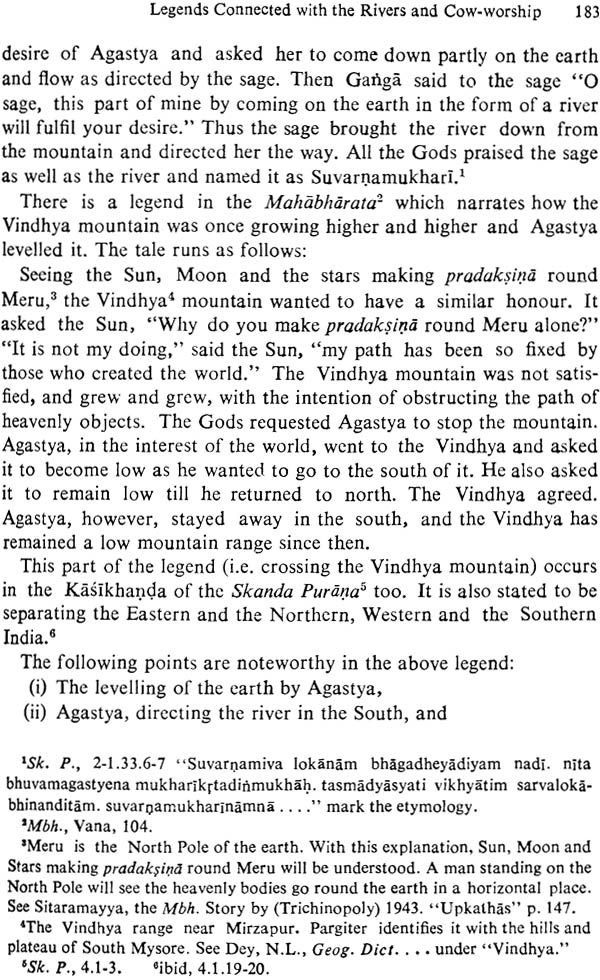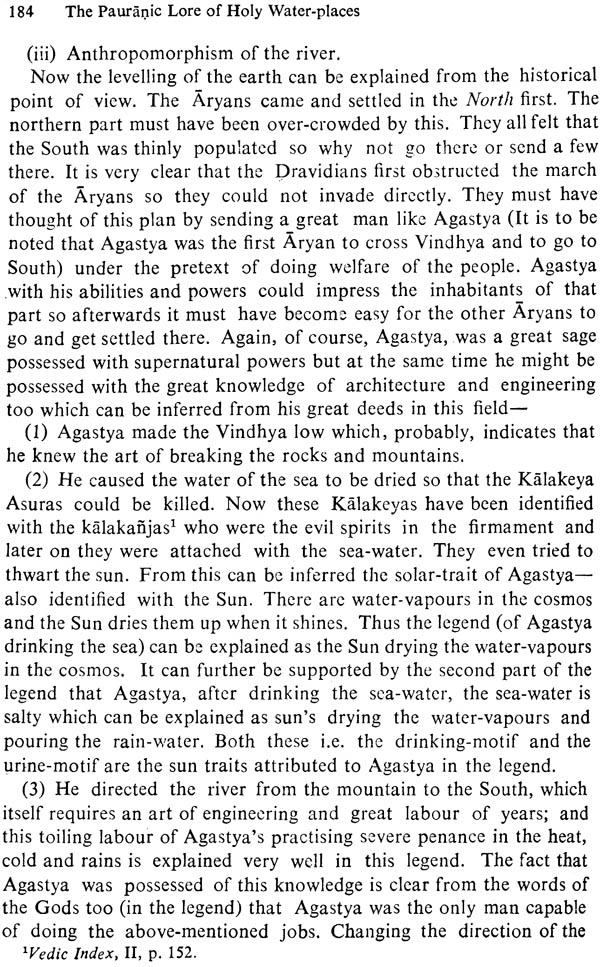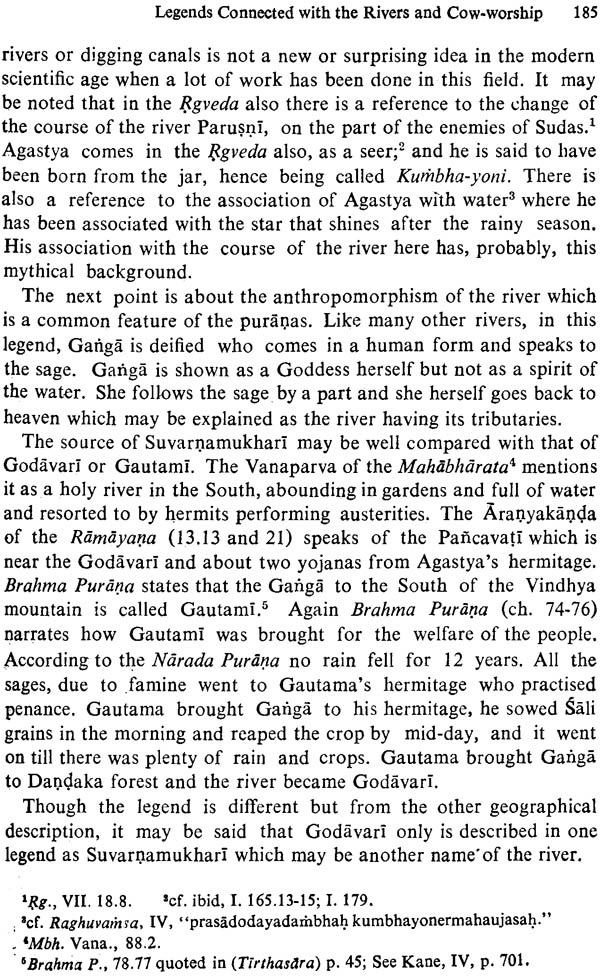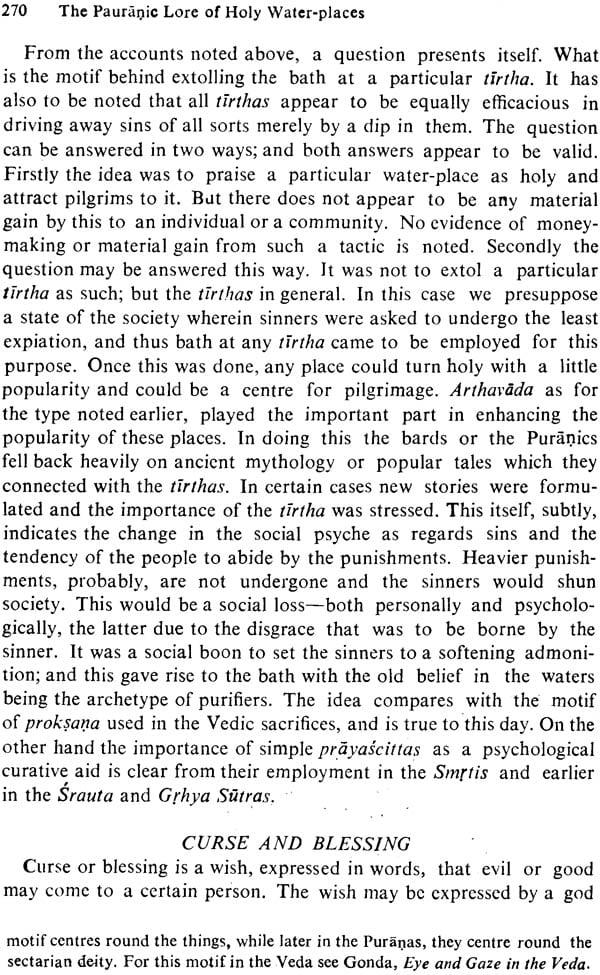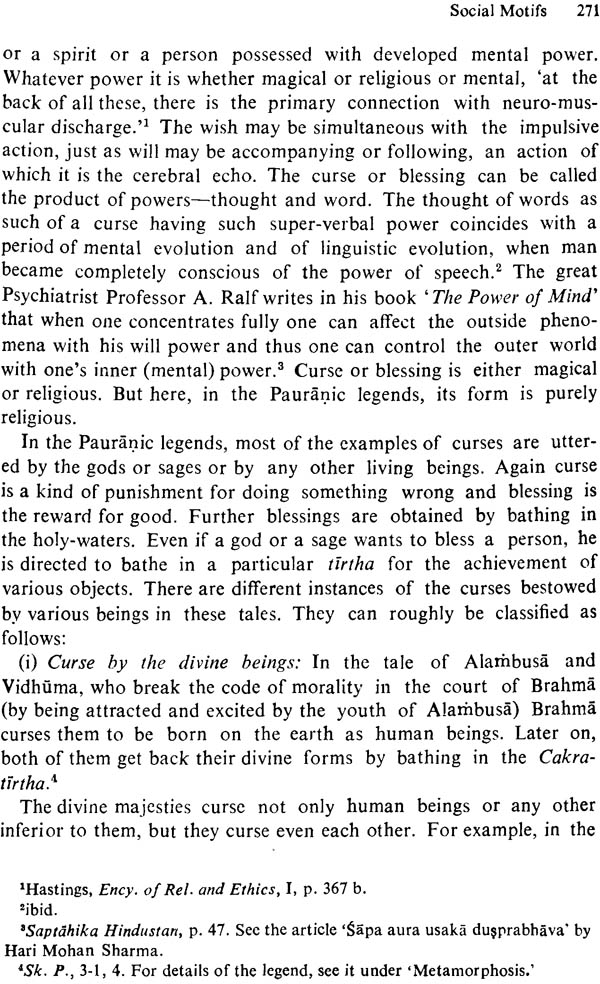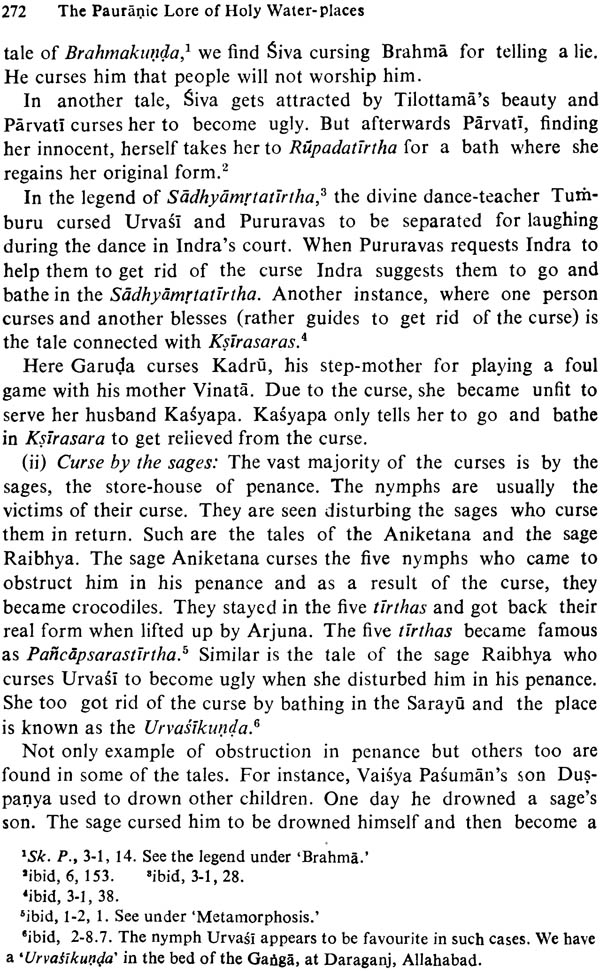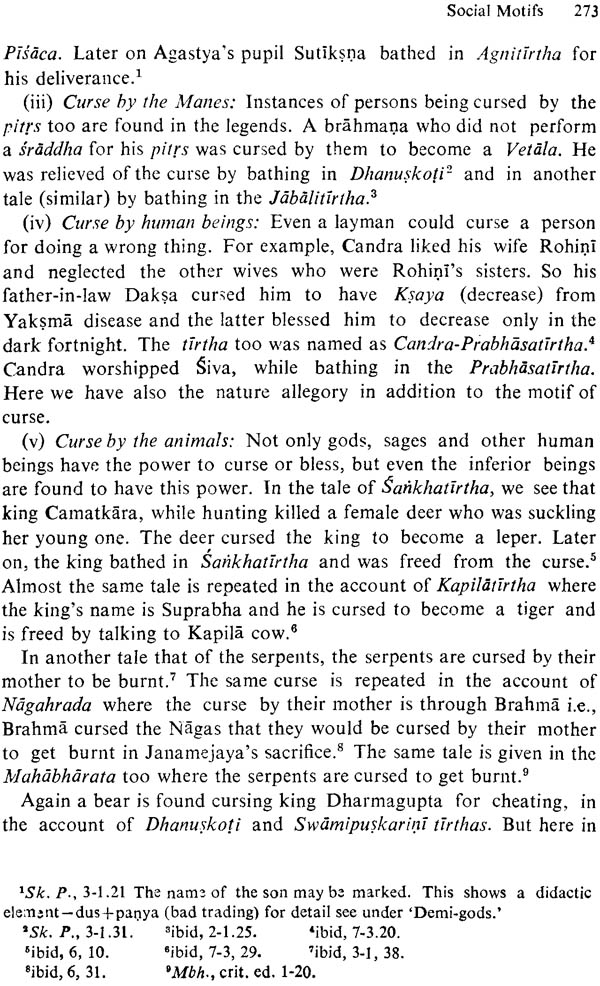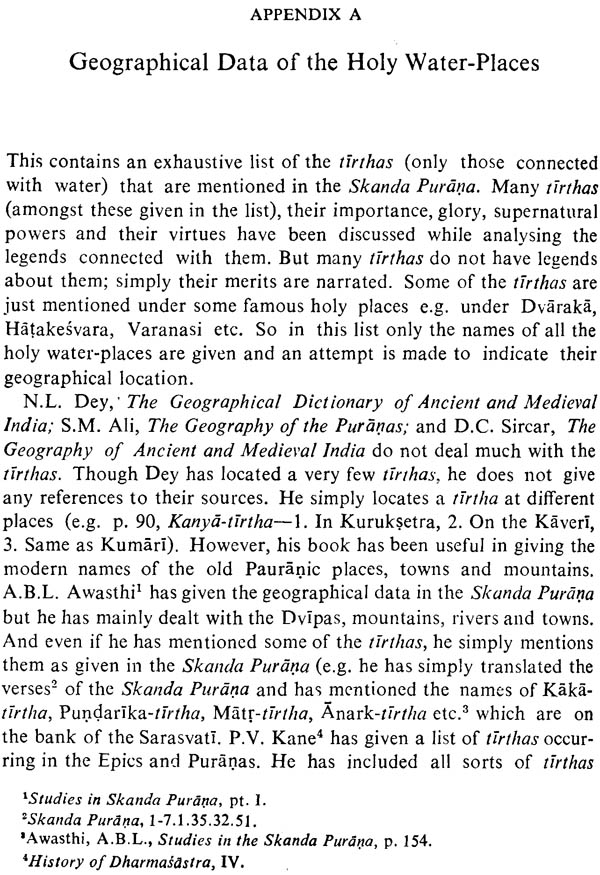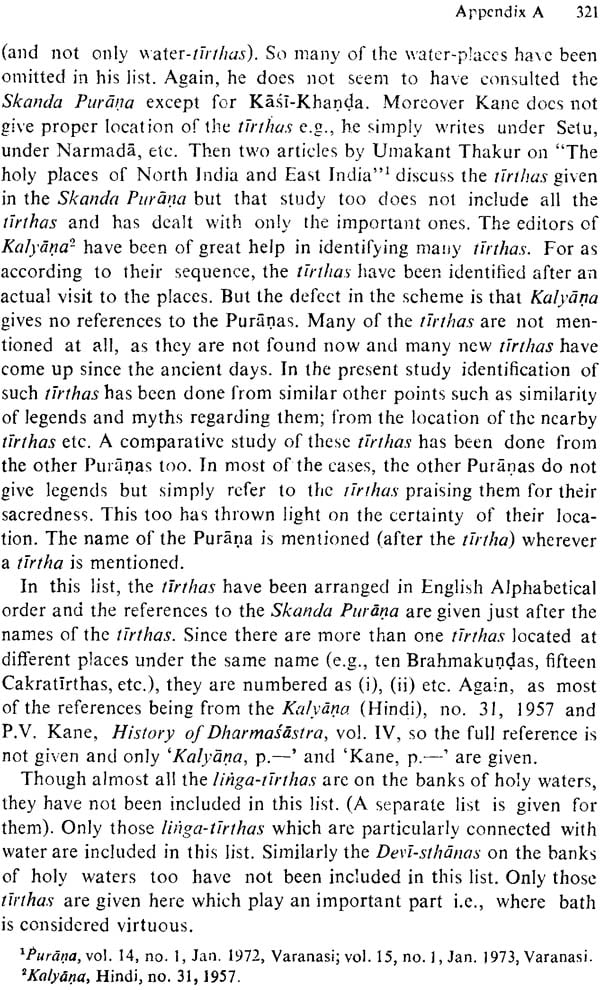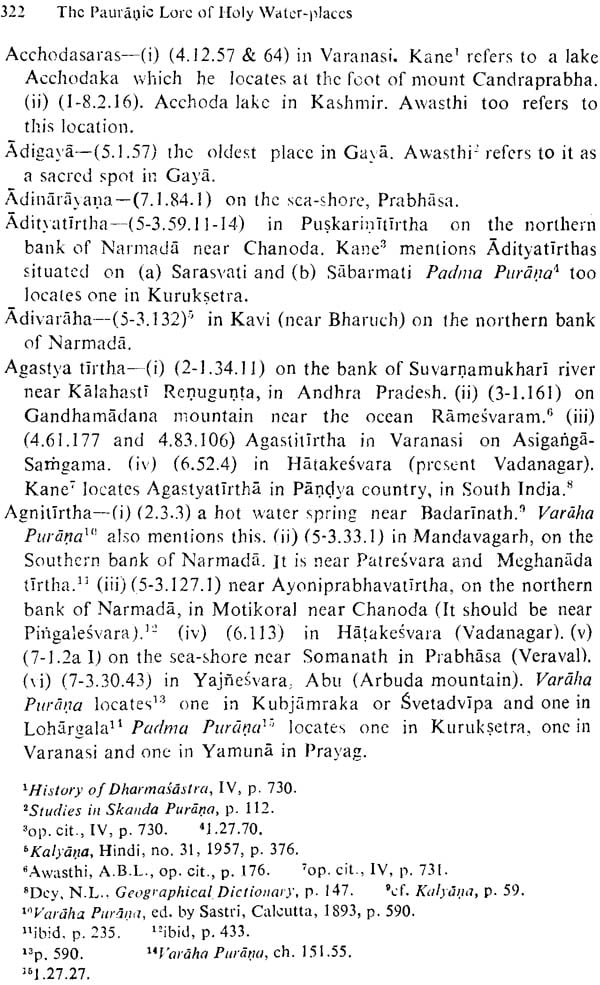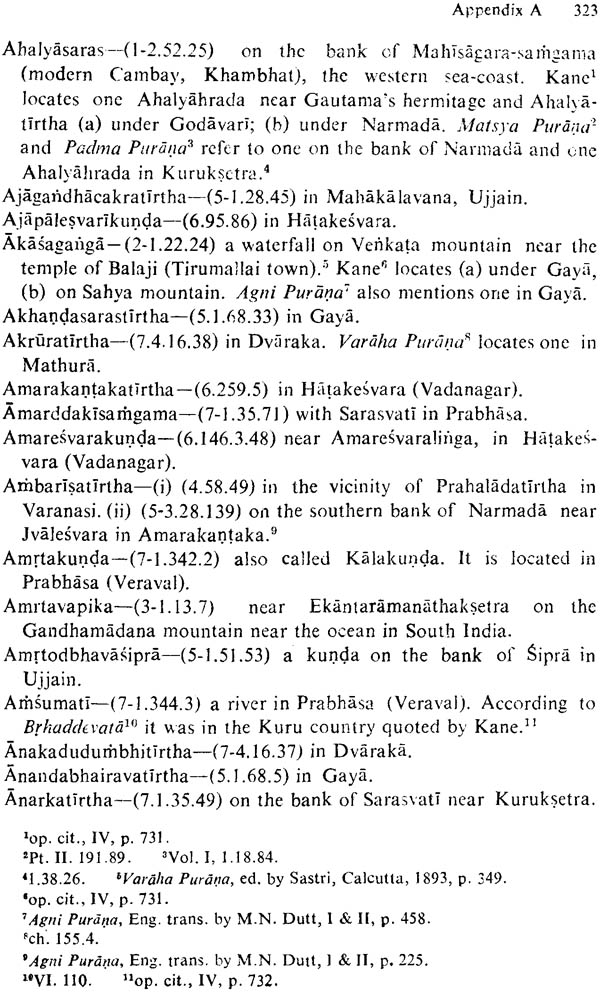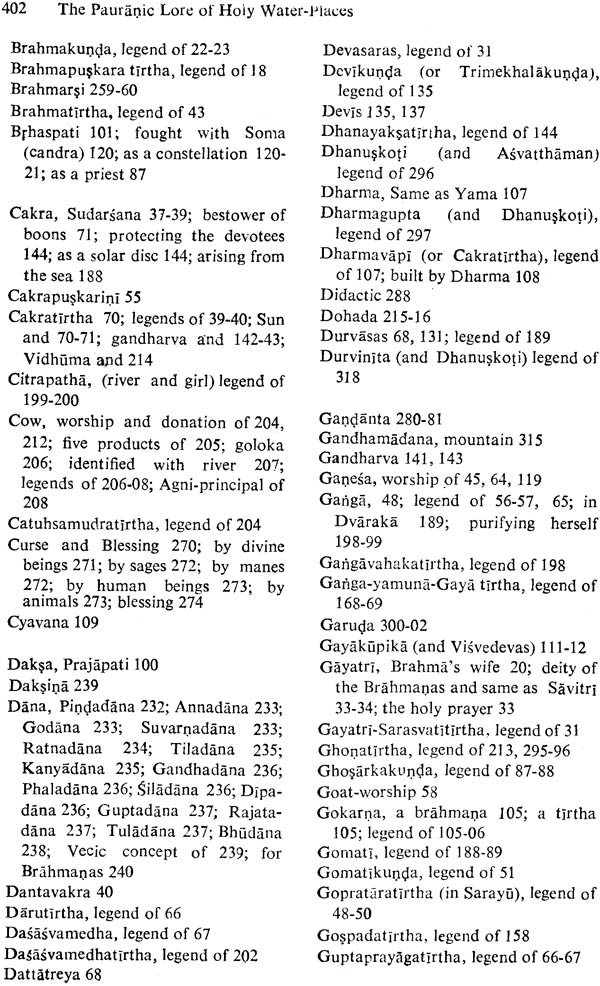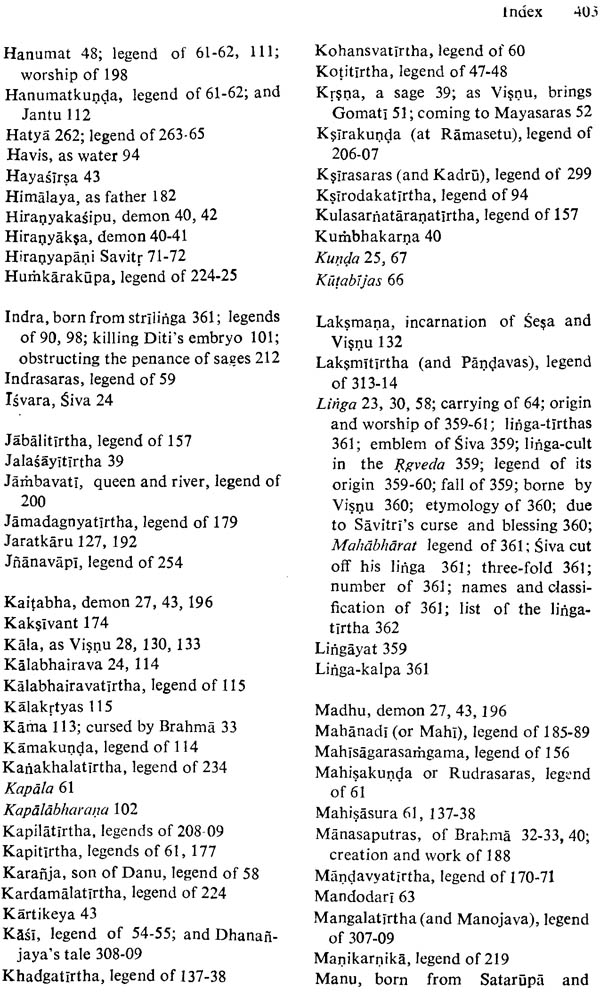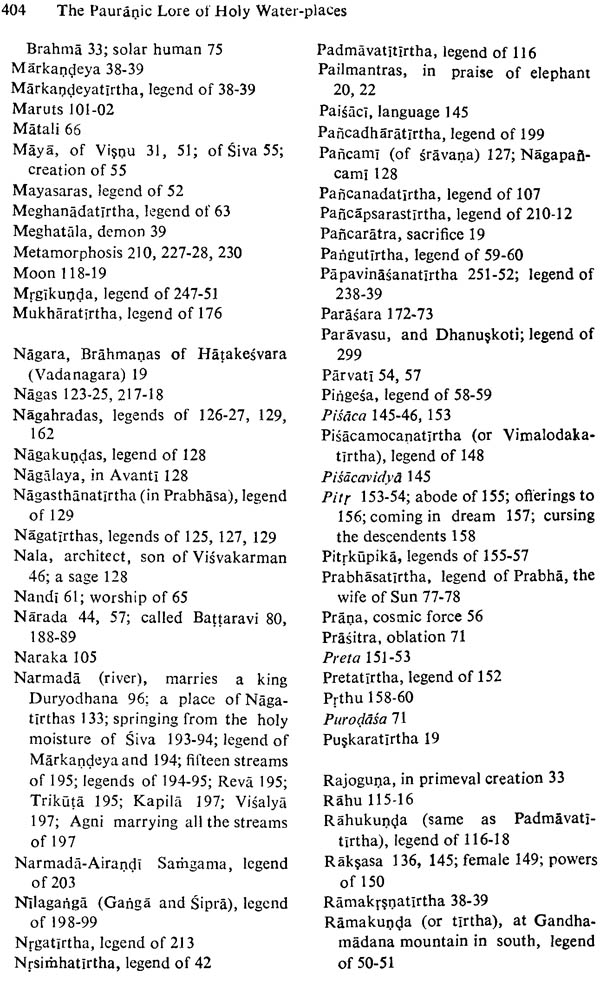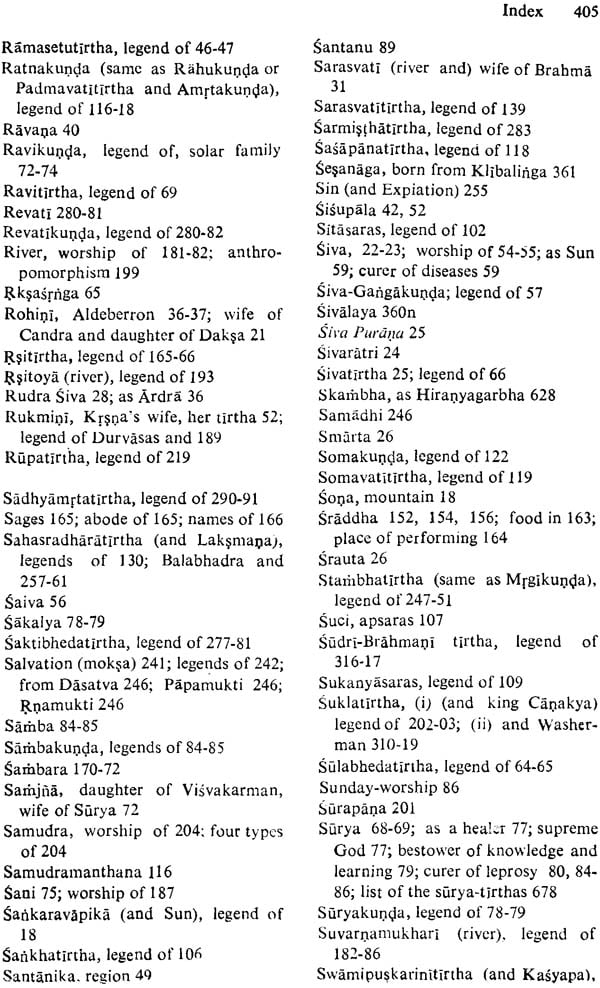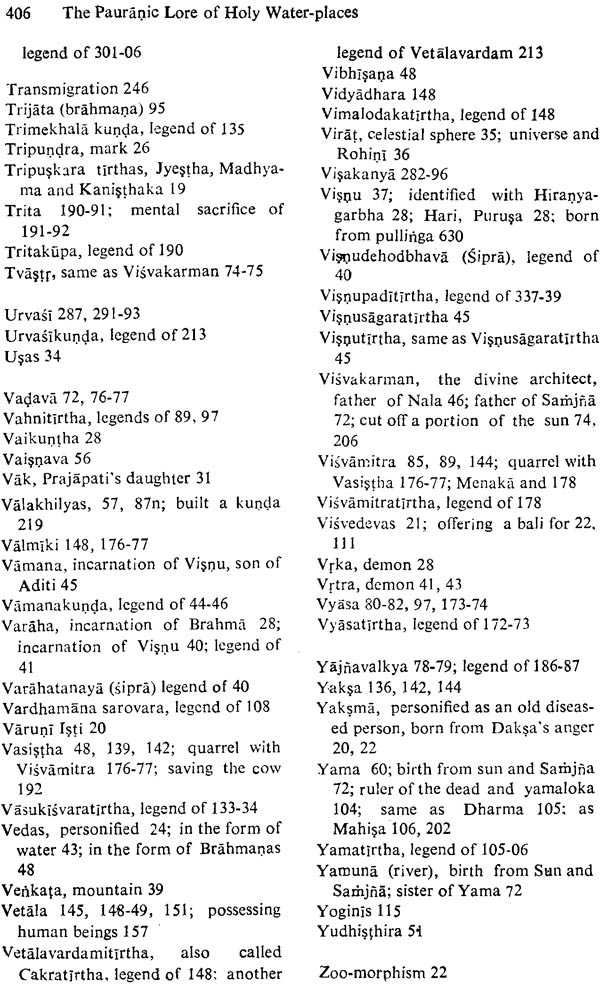
The Pauranic Lore Of Holy Water-Places (With Special Reference to Skanda Purana) (An Old and Rare Book)
Book Specification
| Item Code: | ISL71 |
| Author: | Savitri V. Kumar |
| Publisher: | MUNSHIRAM MANOHARLAL PUBLISHERS PVT LTD |
| Language: | English |
| Edition: | 1983 |
| ISBN: | 8121501474 |
| Pages: | 416 |
| Cover: | Hardcover |
| Other Details | 9.0" X 5.8" |
| Weight | 560 gm |
Book Description
From the Jacket :
The present work is based on an extensive and critical study of the legends connected with Holy water-places. Mythological, historical, geographical and scientific study of the legends is interesting and thought provoking. The Skanda Purana (1000 AD to 700 BC) has been made the basis of this topic most elaborately and covers almost all the tirthas referred to in various texts. Most of the legends have been studied critically and a comparative study has been done from the Vedas, Brahmanas, Upanisads, Epics and other Puranas. Various other mythologies such as Egyptian, Iranian, Greek, North American, African, Babylonian, Roman, Mexican etc. have also been compared to. The imminent purpose of the talks has been studied under various motifs. The author's psycho-scientific method of analysis and interpretation makes the work extremely fascinating and informative. The author has also drawn attention to the medical analysis of various water-tirthas. The work is a valuable addition to the Pauranic and mythological literature.
About the Author:
Dr. Mrs. Savitri V. Kumar is a lecturer of Sanskrit in Shri L. N. Hindu College, Rohtak. On the present work, she has been awarded a Ph. D. Degree from Bombay University.
Myth and Reality cannot be two separate aspects. Water is a common yet, an unusual and extraordinary substance in the world. The inquisitiveness of how much is the reality in these numerous myths and legends woven around the Holy waters inspired me to do intensive research on this subject. The insistence of my revered teachers and colleagues made me undertake its publication. My visits to some of these tirthas, chemical analysis of a few samples of water of various tirthas in the laboratories, interviews with different Doctors, Vaidyas, Naturopaths etc. made the subject more important by bring- ing into light that myths and legends are not away from reality. The time gap and lack of writing facilities in ancient times have given the mythical and legendary shape to the far-off ancient realities. I acknowledge with pleasure my deep gratitude to Prof. S.A. Dange, my teacher and guide, for his constant encouragement and guidance during the course of this work. I am grateful to the University Grants Commission for awarding me the Research Fellowship during this research period. I also thank Shri Devendra Jain of Munshiram Manoharlal for expediting the publication of this book.
Lastly, I cannot help but record here my gratitude to my husband Lieut. Comdr. V. Kumar for his willing cooperation and encourage- ment.
Water is a common but yet unusual and extraordinary substance in the world. In our daily life water is so important that we cannot imagine anything without water. Ancient man, who clearly sensed its importance, made it a central feature of a great many mytholo- gies including that of creation. Many religions use water as a symbol of spiritual purification. Its cleansing virtue stands as a mystical representation of the cleansing power of Religion. Thus water has been used almost by ail religions in the performance of different rituals. Had many properties of water and its components been properly understood, a good number of mysteries and riddles of the world would have been solved.
A number of myths and legends are woven around the sublime power of water, all applauding its divine virtue. Before we take up the legendary study of water, it would be most befitting to review the scientific and natural aspect of this simple and yet complicated substance known as 'water.'
Water has many curiou- aspects It is universally present and has remained unchanged over millions of years. It is at once the servant and the master of man. Yet a common man is aware of its impor- tance only when it fails or endangers him. Then he gets its drama- tic impact accompanied by strange ideas, conclusions and solutions. Water can absorb and release more heat than common substances.' Why is water of various places different? At some places it is beneficial and at some others, harmful, why? Our mythology attri- butes to it some divine power, which aspect we shall explain later. The difference in the quality of water is due to various reasons. The water of rivers, lakes, ponds etc. (i.e. the surface water) in its course . picks up both organic and mineral particles as well as bacteria and other organisms. Salts and other soluble substances are acquired. Water in lakes and ponds may acquire odours, tastes and colours from algae and other organisms and from decayed vegetation. Water that enters the ground passes through earth containing orga- nic and mineral matter, and may absorb minerals and exchange gases. Hydrogen sulfide and methane may be absorbed. Carbonates, sulfates and chlorides, iron, manganese, and flourides may be acquired.'
The most noteworthy trait of water is that it is most useful for its purifying and cleansing character. Without clean water we can't think of a clean and healthy environment. It cleans the dirt of our body as well as destroys the filth it acquires from us. Fresh water has a remarkable ability to absorb the wastes, transform them into useful substances, and thus cleans itself. Some of this self-puri- fication is entirely mechanical. The motion of the river stirs up the wastes into particles which either settle to the bottom or are dilu- ted to harmlessness by incoming fresh water. In addition, a river or a lake also metabolises wastes, just as a living organism does. The river absorbs oxygen from the air and from water-weeds, which release it. during the process of photosynthesis." The dissolved oxy- gen may act on organic wastes directly, by oxidation-in effect, "burning" •them chemically so that nothing remains except carbon dioxide, water and a little ash. More often the oxygen operates in- directly sustaining harmless bacteria that live in water and consume sewage and other organic wastes, leaving behind an inoffensive waste that is either swept away, dissolved, or precipitated to the bottom of the stream. We can give here the instance of the river Ganga's water which does not get spoiled even if preserved for years. The laboratory experiments reveal that the Ganga-water contains Dia- toms (a type of algae) which inject the other harmful bacteria and do. not allow tbe growth of Bacillus Coli (which cause diarrhoea etc.) and allow water not to get spoiled for years."
. Modern methods of purifying the waters and their importance is clearly hinted at in the ancient myths and legends. In olden days, realising the importance of water. a network of tales was spread around these myths and legends. These legends throw light on the varied aspects of the rivers, lakes, ponds and pools, their qualities and virtues, their purification, utility, how to preserve them and divert their course for various purposes etc. They narrate how the rivers were channelised and diverted to different places, how the rivers were fed with fresh water for their purification. In one of the legends (discussed later in the chapter of 'Rivers') when a river comes to Brahma and appeals to purify her, Brahma entreats her to go to another river, bathe there and remain there in one form. This reveals that for purification the rivers were fed by their tributaries, canals etc. The example of the modern river Colorado can be cited here for comparison-"Denver built a dam on the river William Fork--100 miles from the city, on the opposite side of the continen- tal divide -not to supply water to the city, but to replenish the river Colorado."! Again this strengthens the point of the purity of the water at the confluence of two or more rivers or of the Kotitrthas and Sarvatirthas (dealt with later on in the first Chapter) where water of many a river is collected.
Brahma 17
Visnu 37
Siva 54
Surya 68
Agni 88
Indra 98
Yama 104
Asvins 109
Visvedevas, Hanumat, Kama, Bhairava and Rahu 111
Moon 118
Nagas 123
Goddesses 134
Gandharvas, Apsarasas, Yaksas etc. 141
Vetalas, Pisacas, Pretas etc. 145
Pitrs 154
Sages 165
Legends Connected with the Rivers 181
Legends Connected with the Cow-Worship 204
Dana 232
Salvation 241
Transmigration 246
Sin and Expiation 255
Curse and Blessing 270
Astrological Legends 276
Didactic Legends 286
Miscellaneous Legends 310
